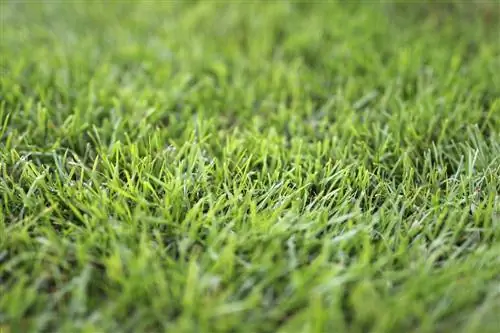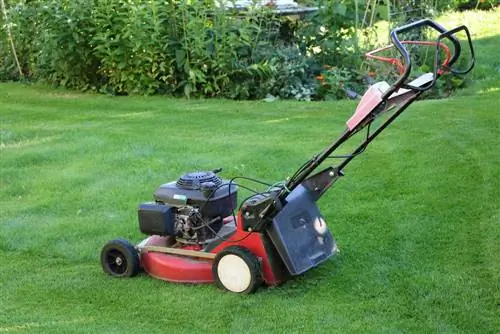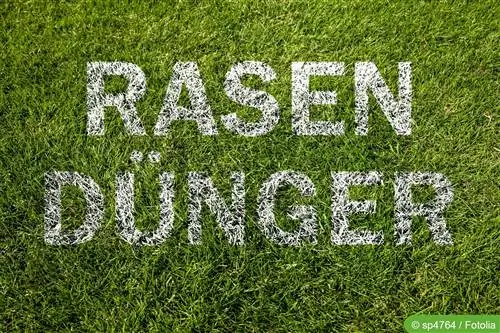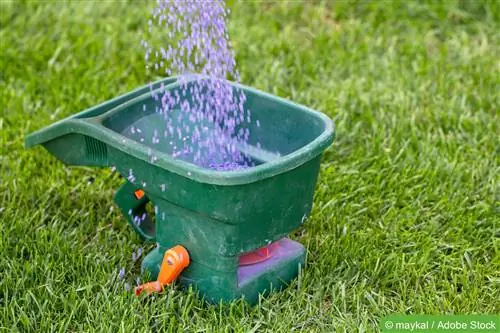- Author admin [email protected].
- Public 2023-12-17 03:39.
- Last modified 2025-01-24 12:45.
The use of weedkillers must be done in the right way. This guarantees that you do not accidentally damage the lawn or neutralize the effect of the product.
Weed killer: timing
Weedkillers are biological or chemical herbicides that work when they come into contact with the plant. As soon as the agent gets on the leaves, they are destroyed (corrosants) or the active ingredients are passed on to the plant (systemic herbicides), which then dies along with its roots. Corrosives are mainly found in the garden. They must dry into the leaves after application to achieve the desired effect. Since they are easy to wash off, you have to choose the right time, otherwise the effect will be significantly less and you would have to repeat the entire procedure for a satisfactory result.
The correct date is determined by the following points:
- Mid-May to June
- no more risk of frost
- Time of day: afternoon, evening
- Temperature: 8°C to 12°C
- mow four days beforehand
- avoid dry soil
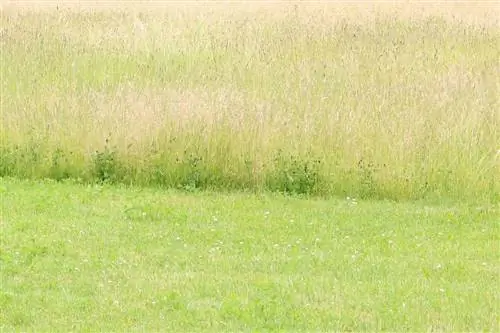
You should also ensure that there is no risk of rain for a period of around eight hours after the treatment. For this reason, check the weather report regularly. The remedy itself does not affect the timing. Therefore, it does not matter which one is selected. Additionally, you should note that weed killers should not be used on lawns that are less than two years old. They could also kill the grasses as they have not yet established themselves sufficiently and are much more sensitive.
Note:
Never use weed killers in mid-summer as the grasses can suffer from severe drought stress. The warm temperatures mean that the products can cause burns.
Application of weedkillers
Once the treatment day arrives, you need to use the remedies in the right way to achieve the best effect. Depending on the weed killer, you use different tools that make spreading easier. If you want to treat small lawns or those right next to beds, use your watering can. You prevent accidental treatment of your flowering and vegetable plants, which could also suffer from the products. A backpack sprayer is used to treat larger areas that are not directly next to your beds. Although you distribute the product to the edges, the weed killer could still land in your beds via possible winds, cause major permanent damage and destroy your harvest. Granules can be spread easily by hand or with a spreader.
Apply the product evenly to the lawn, observing the following safety instructions:
- Observe the dosage according to the manufacturer’s instructions
- Keep animals or children away
- Wear gloves
- If necessary, wear a face mask and safety glasses
- do not spray against the wind
- do not use on closed areas (e.g. stone terraces)
- Herbicides could end up in sewers
- Do not enter the lawn for 24 hours
Tip:
If you don't want to use weed killers and you don't have a large lawn, you can remove the greenery manually. A weed puller is ideal for this, with which you can pull the individual weeds out of the ground along with their roots.
When should I mow?
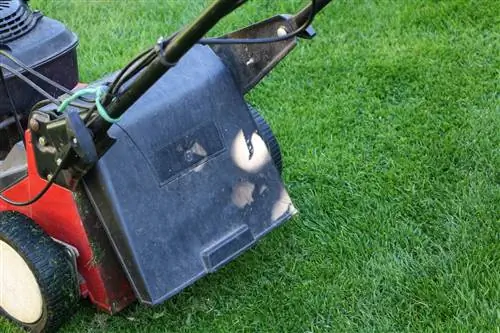
One of the most important points after using the weed killer is when you can mow again. You should never attack the lawn with a lawn mower immediately after treatment, otherwise you will not be able to take effect. In this case, you would just be spending money unnecessarily on the funds. Mowing is still necessary to remove dead plant debris so that the grasses no longer have to compete for water, light and nutrients. Mowing will not occur until at least 48 hours after treatment, although you can wait longer.

